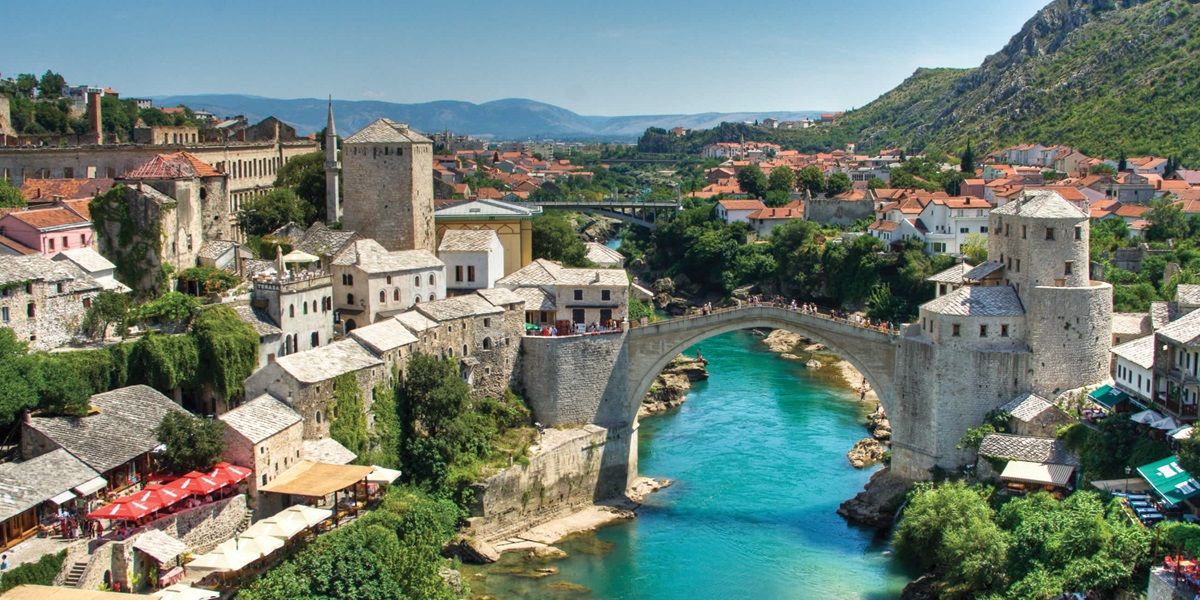The hidden treasures in Bosnia & Herzegovina
Share
You might have heard about Bosnia and Herzegovina through the context of wars and history about Yugoslav etc. Although Bosnia is a country full of history, culture and surprisingly modernity, the place is still outside of many touristy holofotes. Let’s see what makes Bosnia a must see country.

Bosnia and Herzegovina, also know as BiH is a country divided into two separate governmental entities and populated by three ethnic groups with strong cultural identities- Bosniaks (Bosnian Muslims), Croats and Serbs. Bosnian currency is the Marko and its economy is still recovering from the Global Crisis.
The country is also still recovering from the Bosnian war, which happened during the early 1990 between the Yugoslav army, Bonian-Muslim communities, Bosnian-Serbs and Bosnians-Croats in a disturbing politic period. The conflicts were marked by destruction and death. I is estimated that about 200.000 people were killed and more than 2.000.000 misplaced during massacres all around the country.
Sarajevo, the Bosnian capital still brings many scars from its conflits. Its arquitecture is quite interesting as damaged buildings contrast with the busy and modern commercial centre and while the powerful mosques are built in a walk way from catholic churches. The city has a huge mixture of cultures and a certain touch of Turkish and Persian influences.
Interesting facts about Bosnia
- Sarajevo was the first city in Europe with a full-time electric tram. This led the country on to a strong deployment in the transportation (trams and buses) industry. Though nowadays it is no longer a great one since the war destroyed many of their trams.
- Twenty years after the war, landmines are still a very real threat. All three sides (Bosnian, Croatian and Serbian) laid mines during the conflict, some two million in total. Red signs displaying a skull and crossbones can be found at nearly 29,000 locations throughout the country.
- One of Europe’s last jungles can be found in Bosnia. Situated on the border of Montenegro, Perućica is one of two remaining primeval forests in Europe. Some of the trees in Perućica are 300 years old, and the undisturbed forest vintage dates back 20,000 years.
- Sarajevo was the first communist city to host a winter games. The 1984 Olympic games were held in Sarajevo, which at the time was part of Yugoslavia.
- Bosnian has 3 different official languages. Croatian, Serbian and Bosnian. They are pretty much same, but with different dialects.
- Sarajevo holds one of the biggest Film Festivals in Europe. It happens every August and many celebrities are present every year. The festival brings more than 100.000 visitors to the city.
BiH is an example of social peace. In Sarajevo you can find Catholic Churches, Mosques, Orthodox Churches and Sinagogues in the same town and no conflict or tension can be noticed by any side. Alike Mostar, the most separate town in the country, where Muslims live in one side and Croatians and Serbians in the other side of the bridge.
RECOMMENDATIONS
I highly recommend Mostar and the South side of Bosnia as a beautiful destination for outdoor lovers. Its lakes and mountains offer a stunning view and its arquitecture are also amazing.
Sarajevo offer a mix of cultures and scars of the 90’s war can still be seen all around the buildings - which makes a mix of the modern and antiques, it’s awesome!
The cuisine in this country is wonderful as well as who cooks them! Alike you might have read in other reviews, the locals in BiH are incredibly hospitable, which makes the food every more delicious since it’s a moment.
A road trip from the capital down to the South of the country feels like you are stuck in a post card as you drive over stunning blue rivers with crystal water flowing between the rocky mountains. Bosnia and Herzegovina is a great destination and the good news are: it’s cheap!